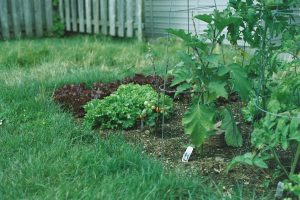
Potash in Orchards: Preparing Trees for Winter Dormancy
Orchards are long-term investments. Whether you manage apples, pears, peaches, plums, or cherries, the productivity and profitability of fruit trees depend on how well they

Every gardener dreams of soil that is easy to work, drains well, and allows roots to stretch deep without resistance. Unfortunately, many gardeners face the exact opposite: heavy clay soils that are sticky when wet, hard as concrete when dry, and nearly impossible for plant roots to penetrate. For those struggling with poor soil structure, gypsum is one of the most effective and affordable solutions.
Gypsum, also known as calcium sulfate, has long been used to improve soil structure and fertility. It is a natural source of both calcium and sulfur, two nutrients that are critical for plant health. More importantly, gypsum is a soil conditioner that transforms heavy, compacted clay into soil that breathes, drains, and supports healthy growth.
October is one of the best months to apply gypsum in gardens. Cooler weather, fall moisture, and the end of the growing season create the perfect conditions for gypsum to begin working before winter. By applying gypsum now, gardeners set themselves up for healthier soils and stronger plants in the spring.
At Supply Solutions LLC, high-solubility gypsum is available to support gardeners, landscapers, and farmers alike. Whether you are improving a vegetable patch, caring for ornamentals, or reconditioning lawns, gypsum is a product every gardener should know about.
Gypsum is calcium sulfate dihydrate, a naturally occurring mineral that provides two valuable nutrients while also improving soil structure.
Unlike lime, gypsum does not raise soil pH. This makes it especially useful in regions where soils are already neutral or alkaline but suffer from compaction or poor structure.
Fall application of gypsum offers several advantages for gardeners:
By working ahead in October, gardeners save themselves time and effort when spring planting begins.
Gardeners who grow vegetables in clay soils often see stunted plants, yellowing leaves, and poor yields. Gypsum offers a solution by improving soil texture and nutrient availability.
Vegetables thrive in well-structured soils, and gypsum provides the foundation for healthier crops.
Lawns are especially prone to compaction from foot traffic, pets, and mowing equipment. Clay soils make this worse by sealing off air and water movement. Applying gypsum in October helps lawns recover and prepare for spring.
For homeowners who struggle with thin, patchy lawns, gypsum is a simple fix that works quietly over the winter.
Ornamental plants often show stress when grown in clay soils that stay soggy or crust over. Gypsum helps create healthier conditions.
Applying gypsum to ornamental beds in October is an easy way to keep gardens looking their best.
Gypsum is easy to use, but correct application ensures the best results.
By understanding what gypsum can and cannot do, gardeners can use it more effectively.
At Supply Solutions LLC, high-quality gypsum is available to support real-world gardening and landscaping needs. With high solubility and consistency, it provides calcium and sulfur in a form that plants can quickly use. Gardeners can trust that products are selected for reliability, making them a smart investment for soil improvement.
Beyond products, Supply Solutions LLC provides expertise and guidance to help gardeners understand how to integrate gypsum into broader fertility programs. This ensures that each application delivers maximum results.
Clay soils may seem unmanageable, but gypsum provides a practical solution that transforms soil over time. By applying gypsum in October, gardeners improve drainage, enhance root growth, and supply critical nutrients. The results show up in the form of healthier lawns, stronger ornamentals, and more productive vegetable gardens.
For gypsum and other trusted soil amendments, visit Supply Solutions LLC. Reach us through our contact form, message us on Facebook, call 503-451-1622, or email sales@mysolutionssupply.com to get the products and advice you need to improve your soil this fall.

Orchards are long-term investments. Whether you manage apples, pears, peaches, plums, or cherries, the productivity and profitability of fruit trees depend on how well they
Every successful vegetable garden begins with healthy soil. Fertile soil is not only about nutrients but also about structure, drainage, and the ability to support
Give us a call or visit our store, and we’ll help you find the right solution for your business.
© Supply Solutions LLC 2025